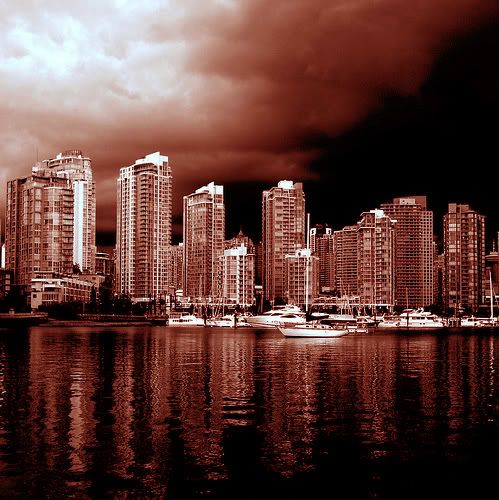canadian solider mistakenly kills afghan police officer
Canadians, Afghans at odds over killing of officer
Local forces ignored warnings: military
Graeme Smith
From Monday's Globe and Mail
KANDAHAR, AFGHANISTAN — An angry split emerged between Canadian and Afghan forces in a key district west of Kandahar city this weekend as they disagreed about the circumstances in which Canadian soldiers killed an Afghan police officer and injured six other people.
Soldiers fired twice on Saturday at vehicles they mistook for approaching enemies in the barren desert under the midday sun.
The Canadian military expressed deep regret after discovering that the troops had attacked Afghan security forces, their biggest allies in the fight against Taliban insurgents in the country's violent south.
But Canadian officials said the soldiers had reacted properly to a perceived threat, as the Afghans drove toward a Canadian artillery position about 25 kilometres west of Kandahar city at high speed in unmarked vehicles, carrying weapons but wearing local clothing.
The military says the Afghans continued to speed toward the Canadians' makeshift camp, despite warnings, and responded to warning shots by returning fire at the Canadians around 12:20 p.m. local time.
No Canadians were injured as the Afghans were quickly overwhelmed by a flurry of bullets, leaving one dead and four injured. A similar scenario repeated itself just 45 minutes later in the same location, as Canadians shot and wounded two men later identified as police as they approached on a motorbike.
"The key issue here is that the Afghan national security forces were not in uniform," said Colonel Fred Lewis, deputy commander of the Canadian contingent in Afghanistan.
That version of events was challenged by police and government officials in Zhari district, where the shooting happened.
That version of events was challenged by police and government officials in Zhari district, where the shooting happened.
Afghan National Police officers caught in the Canadian gunfire were wearing standard-issue police uniforms and driving white pickup trucks marked with the word "POLICE" in green lettering on the doors, two local officials said.
"The police are very upset, because the Canadians should know our vehicles by now," Haji Kheerdin, the Zhari district chief, said yesterday in a telephone interview.
"They especially should know the vehicles they bought for us," Mr. Kheerdin added.
He said one of the pickup trucks, following behind the vehicle hit by Canadian fire, was a clearly marked, four-door white Toyota donated to the police in a ceremony earlier this summer at the Canadian reconstruction headquarters in Kandahar.
Four of the injured officers had been wearing the local shawar kameez, consisting of a knee-length shirt and baggy trousers, because they work for the National Directorate of Security -- Afghanistan's intelligence agency -- and usually dress in plainclothes for their own protection, Mr. Kheerdin said.
Responding to questions last night, the Canadian military confirmed its view that none of the Afghan casualties had been wearing uniforms and that the police vehicles were unmarked.
"I can't really comment on why we're getting contradictory stories," Lieutenant-Commander Kris Phillips said.
The National Investigation Service, an independent agency that examines lethal-force incidents in the military, sent officers to the scene in Zhari district little more than two hours after first reports of the shooting, LCdr. Phillips said.
The NIS is already investigating the death of a 10-year-old boy last week, after Canadian soldiers in Kandahar city opened fire on a motorcycle that approached a military cordon and failed to stop when warned.
Beyond looking at the details of the latest shooting, however, Afghan officials say they're hoping that investigators will re-examine the Canadian soldiers' use-of-force training and improve the shoddy communication links with their Afghan allies.
Reporters embedded with Canadian troops are forbidden from reporting the rules of engagement that dictate when a soldier can shoot. But local Afghans say they have noticed the Canadians seem more willing to fire warning shots at civilians since a fresh rotation of troops arrived in late summer. It's been a difficult month for the new soldiers, as they witnessed eight Canadian deaths since the beginning of August.
Mr. Kheerdin blamed the new troops' lack of familiarity with his region.
The spectacle of a pickup truck full of plainclothes Afghan police, sometimes with their faces covered, usually overloaded with rocket-propelled grenade launchers and Kalashnikov rifles, is an ordinary sight in the dangerous districts southwest of Kandahar. Local police are accustomed to roaring around the countryside at high speeds, forcing traffic to yield.
"It was a Canadian mistake, because they were in a new place," the district chief said. "They were not familiar with their surroundings."
Several other officials said the incident shows the urgent need for equipment that would allow Afghan forces to talk with their foreign counterparts. Some Afghan National Police are issued Icom or Motorola radios, but many fighting units have trouble finding enough bullets, much less communications equipment.
Police have been promised radios in Zhari district, but none have arrived. They rely instead on the Roshan mobile-phone network, which often fades out in the dusty wastelands.
"In police work, communications are very important," said a senior police official in Kandahar city. "Roshan is not enough. We need radios."
+Mini.jpg)




|